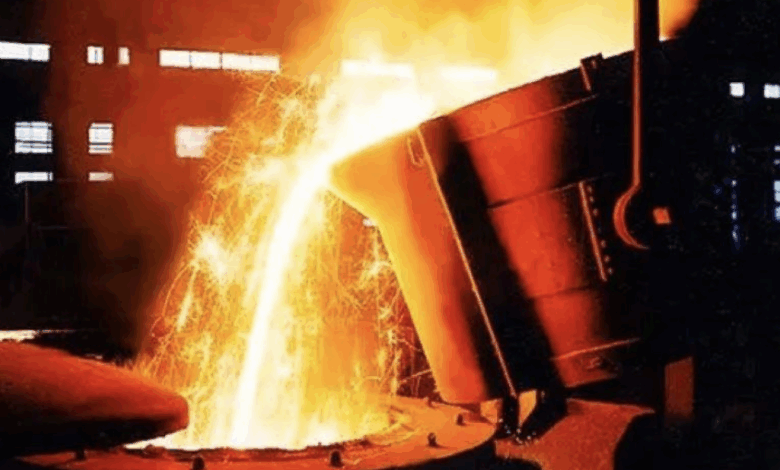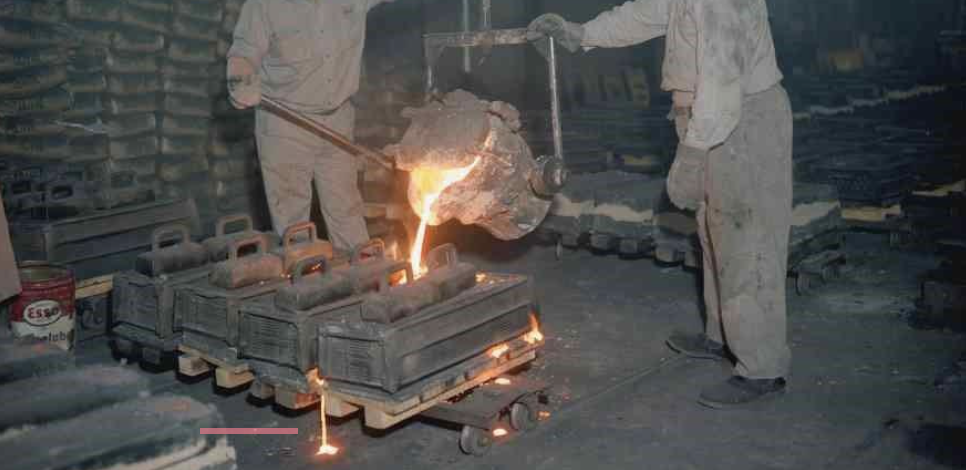
Steel induction melting is now essential in modern metallurgy, offering clear advantages in efficiency, energy savings, and cleaner production. However, traditional operations still face significant hurdles—a reality we’ve observed firsthand at FOCO Induction.
Steelmakers often depend heavily on operator skill, struggle with inconsistent process parameters impacting quality, and find energy and cost optimization difficult, alongside strict safety and traceability demands.
Now, the blend of Artificial Intelligence (AI) and automation is moving this core process towards a smarter future–the “Industry 4.0” era. This article explores how this data-driven intelligence is being applied and what it means for the future of steel melting.
Intelligent Core: Data-Driven Steel Melting Revolution
The heart of modern steel induction melting lies in intelligence. Artificial intelligence transforms raw operational data into precise, real-time decisions. This shift moves control from reactive human adjustments to proactive, predictive systems. The result is a fundamental leap in process stability, safety, and quality.
1. Intelligent Process Control: Precision in the Melt
Traditional melting relies heavily on operator skill to manage constant variations. AI systems now tackle this directly by analyzing key parameters in real-time.
They continuously monitor scrap composition fluctuations (like carbon, silicon, manganese), molten pool temperature, and electrical arc stability. The system then instantly adjusts the medium-frequency power supply’s output and frequency to maintain optimal melting conditions.
Steel melting faces specific challenges: overheating risks oxidation, while low temperatures cause skulling. Machine learning models solve this endpoint prediction problem.
Using historical melting data, models like LSTM networks forecast the exact target steel temperature within a tight ±3°C window. They also accurately predict the final carbon equivalent value. This precision prevents costly issues like overburning in high-carbon steels or composition deviations in low-carbon grades.
2. Predictive Maintenance: Protecting the Furnace
Furnace lining erosion remains a major pain point and safety risk in steel operations. Modern systems deploy non-contact monitoring solutions like vibration sensors and infrared thermal imagers.
These tools track subtle changes in the refractory lining thickness continuously. AI algorithms analyze this data, issuing automatic warnings when lining thickness drops below critical levels, such as 30% of original thickness. This timely warning system stops hazardous molten steel leaks before they occur.
Beyond immediate warnings, digital twin technology offers deeper insights. These virtual models simulate actual melting operating conditions, including intense thermal shock cycles. By analyzing this simulated wear, the system predicts the remaining useful life of the refractory lining. This insight enables foundries to schedule maintenance more efficiently, reducing unexpected outages while improving furnace uptime.
3. Full Process Quality Traceability: Trust Through Data
Consistent, verifiable quality is non-negotiable for demanding applications like automotive steel. Intelligent systems achieve this with rigorous, automated composition tracking.
An online spectrometer performs automated chemical analysis of the molten steel every two minutes, measuring critical elements like Carbon (C), Sulfur (S), and Phosphorus (P). This ensures tight composition control throughout the melt cycle.
Data integrity is paramount for traceability. All composition readings upload instantly to a secure digital ledger using blockchain technology. This creates an immutable, timestamped record of the steel’s chemistry at every stage.
Customers gain absolute confidence in the material’s history and composition, meeting stringent quality assurance requirements for high-end products. Traceability becomes a core part of the delivered value.
This data-driven intelligence fundamentally reshapes how steel melts. It achieves unmatched accuracy and control directly within the furnace. Yet, realizing the full potential requires seamlessly connecting this intelligence to physical operations. The next step explores how automation integrates these smart systems into complete, closed-loop production lines.
Automation Integration: From “Lights-Out Factory” to Closed-Loop Control
True transformation in steel induction melting happens when intelligence meets physical action. Automation seamlessly connects smart algorithms to melting machinery, enabling continuous, consistent steel production.
This integration minimizes human intervention for routine furnace tasks while maximizing system responsiveness to molten steel conditions. It shifts foundries toward reliable “lights-out” melting operations with real-time critical decision-making.
1. Fully Automated Production Line Architecture
Physical automation tackles steel melting’s material flow and hazardous tasks. AGVs autonomously transport steel scrap charges throughout the workshop, using RFID tags to accurately identify and sort different scrap grade–critical for precise charge composition.
Six-axis robotic systems manage high-risk furnace operations: conducting immersion thermocouple readings, collecting molten metal samples for spectral analysis, and performing accurate slag removal procedures. This significantly reduces operator exposure to high-temperature splashes and furnace radiation.
Human expertise now focuses on value-added oversight. Operators monitor the entire induction melting process from integrated control consoles. Their role shifts to managing process exceptions like electrode breakages or critical cooling water anomalies in medium-frequency power supplies. The system automatically generates comprehensive steel heat reports, freeing metallurgists for quality analysis rather than manual logkeeping.
2. Data Closed-Loop System: Intelligence in Steel Melting
Accurate temperature and composition monitoring of molten steel requires centralized data integration. SCADA systems integrate live streams from critical assets: medium-frequency power supply parameters, fume extraction system status, and closed-loop cooling water units for induction coils.
The AI core continuously analyzes this data, dynamically adjusting holding power levels to maintain optimal superheat temperature without operator input.
Speed is critical for steel quality consistency. AI instructions execute directly through PLCs controlling the melting process. This bypasses manual review for predefined actions like switching melting curves based on detected steel grade, or fine-tuning electromagnetic stir parameters. Direct execution eliminates latency in thermal control, preventing carbon pickup or oxidation.
This automated integration achieves unprecedented consistency in induction melting. Robots handle high-risk tasks tirelessly while humans focus on process health.
Yet deploying these systems for steel production introduces practical considerations around implementation. The following section examines both promising frontiers and tangible challenges facing modern foundries adopting this transformation.
Frontier Trends and Industry Challenges
The steel industry is evolving through technology integration and facing significant implementation hurdles. These changes aim to enhance efficiency and sustainability but require overcoming economic and talent barriers.
In green energy integration, hydrogen-oxygen burners help achieve higher melting temperatures while reducing fossil fuel use by approximately 30%. Waste heat boilers capture energy from flue gases, converting it into electricity to boost overall system efficiency. These innovations support cleaner production but depend on reliable green energy infrastructure.
Cross-boundary innovation includes using silicon carbide IGBT modules to boost medium-frequency power supply efficiency from 98% to 99.5%. This upgrade enables larger furnaces, like 30-ton units, to operate continuously with stable performance. Such advancements highlight the role of electrical engineering in modernizing metallurgy.
However, economic feasibility remains a challenge. Retrofitting a 30-ton intelligent melting furnace costs over 20 million yuan. For smaller steel producers, the five-year-plus ROI timeline creates financing challenges without subsidies or incentives.
The talent gap also slows progress. There’s a shortage of engineers with combined expertise in metallurgy, AI, and automation systems. This shortage delays the adoption of smart technologies and requires targeted education and training initiatives.
Conclusion
Intelligence and automation fundamentally redefine steel induction melting. This shift moves beyond adding new tools to reshape the entire production value chain. The core outcome delivers measurable improvements: maximum safety assurance, exceptional product quality consistency, minimized operating costs, and peak energy efficiency.
This transformation is now a competitive necessity for the industry. Adopting smart melting technology is no longer optional but essential for future viability. Companies implementing these solutions early gain significant strategic advantages in operational resilience and market positioning.
The path forward points to smarter, greener, and more adaptable steel production. Foundries embracing this evolution will operate more sustainably while rapidly responding to market demands. This new era of intelligent induction melting invites the entire industry to actively participate in building a technologically advanced future.






